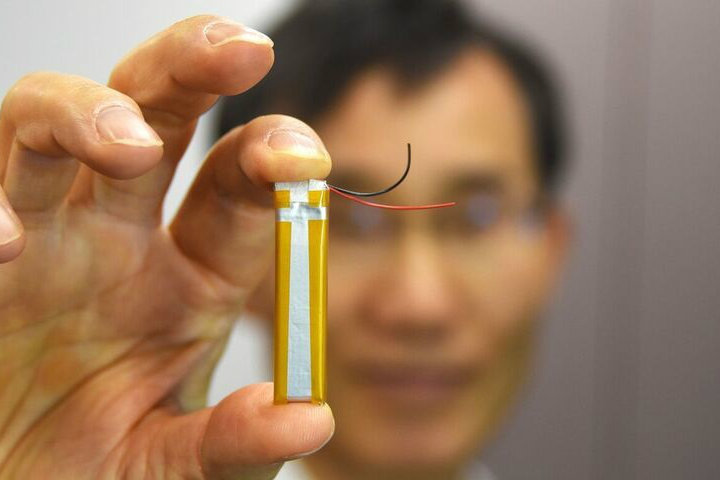
Electronics company Maxell got together with Kopin, makers of new augmented reality glasses for cyclists, to introduce a battery geared toward wearable tech. It’s called SiMax and it consists of silicon oxide with carbon contained in the anode. Kopin Chief technology officer Dr. Hon Choi can be seen showing it off in the above photo. The company claims double the capacity for a given battery when compared to the average lithium-ion setup.
Kopin will market the new SiMax batteries in their headgear. They will be used in Kopin’s Solo, the aforementioned augmented reality glasses. Dr. John C.C. Fan, CEO and president of Kopin, said in a statement, “Wearables will only reach their potential if the technologies inside them can support the best possible user experience.”
Kopin has experience creating efficient headset displays for pilots and more. The higher capacity combined with the smaller size and lighter weight of SiMax batteries gives Kopin the opportunity to expand its product designs. “Smaller, longer-lasting, lighter batteries are a critical building block for the success of wearables.” Dr. Fan said.
Maxell is known for more than just the guy hunkering down in his leather armchair as his tie flutters in the soundwaves. On the consumer front, the company has a popular line of headphones, while Maxell audio tapes (remember those?) were huge in the ’90s. What you probably didn’t know is that Hitachi Maxell also has an industrial battery division.
Maxell benefits by extending its reach and the visibility of its product, which could prove a boon to the industry. Chief technology officer of Hitachi Maxell Masao Okafuji said, “While it has been well known that the use of high-SiO-C-content anode can provide several times the energy density than the graphite anode used in today’s Li-ion cells, until now serious technical challenges prevented its use. We have now overcome these technical challenges.”
Meanwhile, Maxim Integrated focused on a power management integrated circuit, the MAX14720. The format is designed for non-rechargeable batteries such as coin cells. It also has an electronic seal that prevents the battery from using power prior to initial device start up. The company described it as five components in one — a power switch, linear regulator, buck regulator, buck-boost regulator, and monitor — all of which allow for smaller form factors.
Editors' Recommendations
- How to use iOS 17 FaceTime gestures (and what they look like)
- This is what the iPhone 16 Pro could look like
- Intel’s next GPU just leaked, and it looks like a sub-$200 card worth buying
- Here’s what iOS 17’s coolest feature looks like in action
- Your Fitbit app is about to get a major update. Here’s what it looks like

